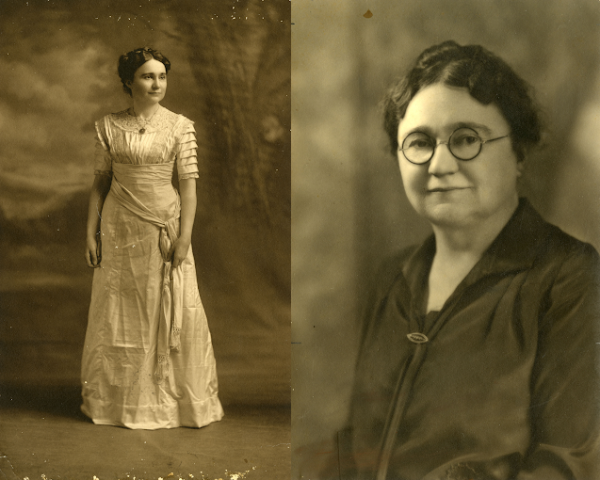Why pumpkins?
The story behind these popular symbols of the season.

Crochet pumpkins made by MariaJose Guerrero Hernandez
Pumpkins have been a big symbol of fall for decades. They’ve taken over everything during the season, from pumpkin carving and pies to candles and lattes. There’s no escaping them.
But have you ever wondered why pumpkins became such a popular part of fall? How did they get to the U.S., and what made them so prevalent?
Sustainable Food Systems Professor Tony VanWinkle, an expert on the history of agriculture in the Americas, explained where pumpkins were thought to originate
“Pumpkins were one of many plants domesticated by Native Americans,” said VanWinkle. “The oldest found archaeology, which is always changing with time as archaeologists find more evidence, of pumpkin seeds was in Oaxaca, Mexico. There’s evidence that they might have been cultivated at the same time in the southeastern United States, so what is now Tennessee specifically. They were called winter squashes and that’s because once harvested, (they) usually could last all winter and even up till summer.”
The famous pumpkin plant was later spread by Spaniards to the rest of Europe.
“When the Spaniards came to the Yucatán (in Mexico), they were served a dish called papadzules, or ‘food for the lords,’ consisting of corn tortillas dipped in a pumpkin seed sauce,” a BBC article on the origins of pumpkins reported. “The Spaniards brought the nutritious calabaza back home, where it spread throughout the world and diversified over several centuries.”
Vanwinkle also provided insight into where the pumpkin-carving tradition came from after the plant spread to Europe.
“That whole tradition of jack-o’-lantern carving came from Europe. It came from Ireland, and before the Irish came to the Americas…where they first discovered pumpkins, they used to do the same thing with turnips,” VanWinkle said.
The Irish tradition began because of the myth of Stingy Jack.
“‘Stingy Jack’ was said to have fooled the devil several times,” according to an explanation of the myth on NorwayToday. “The last time, he tricked the devil into promising not to take his soul when he died. Jack couldn’t end up in hell. But because of his dealings with dark powers, and love of strong liquor, Jack wasn’t welcome in heaven either. When he died, therefore, Jack had to walk the earth forever with a piece of glowing coal as his only light. Jack put the chunk in a carved cabbage root, and today he wanders in the dark with it, throwing off an ethereal green light.”
To keep Jack’s soul away from their homes, the Irish people would carve turnips and even potatoes with scary-looking faces, which we commonly see on pumpkins today, to scare Jack off. According to history.com, Jack was called “Jack of the lanterns,” which later became “jack-o-lanterns,” the name given to the popular carved pumpkins now.
During the mid-19th century, a huge number of Irish people immigrated to America and brought Halloween and all of its traditions with them. Pumpkins are now seen as a staple of the fall season, and have a variety of uses.
“My favorite pumpkin product would have to be pumpkin bread. There’s just something about it that tastes so good,” says junior English major Haley Madison.
“Candles would have to be my favorite pumpkin product because they are just enough to not make you want to vomit,” said junior Sierra McCollum. “When they are mixed with other scents, like vanilla, it gives me a sense of hope or comfort.”
McCollum and Madison shared their favorite memories associated with pumpkins, particularly during their elementary school years.
“We would have field trips to the pumpkin patch and we would ride in those big trucks in the hay and then sip on apple cider,” said Madison. “It was so fun. There’s just a lot of nostalgia there.”
“We brought in pumpkins and had a competition where we got to dress them up,” said McCollum. “We made characters out of them like Minnie and anything we could think of and voted on whose was the best.”
While most of America was unable to celebrate Halloween like normal last year due to COVID restrictions, many still used pumpkins to celebrate the holiday through traditions like pumpkin carving and enjoying their favorite pumpkin products. But if you don’t like the mess made by pumpkin carving, you can always try something new and crochet your own little jack-o’-lantern buddy.









